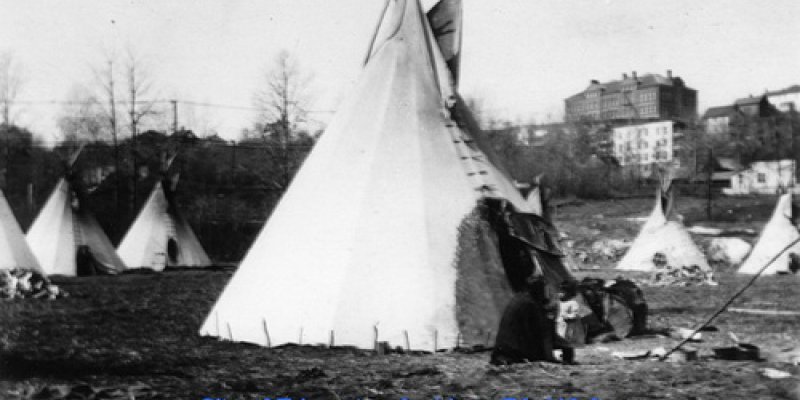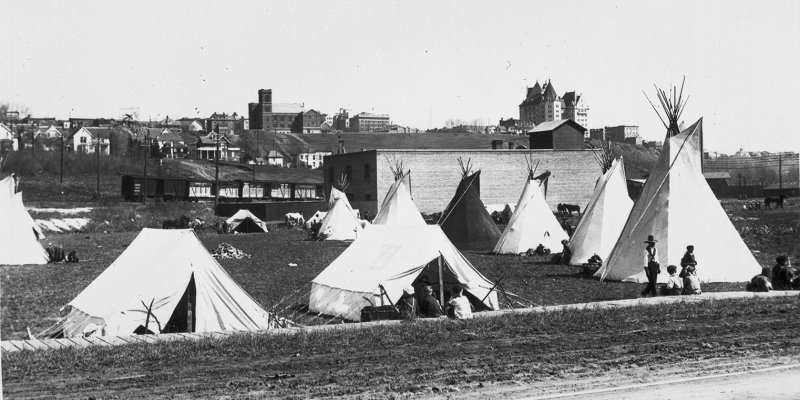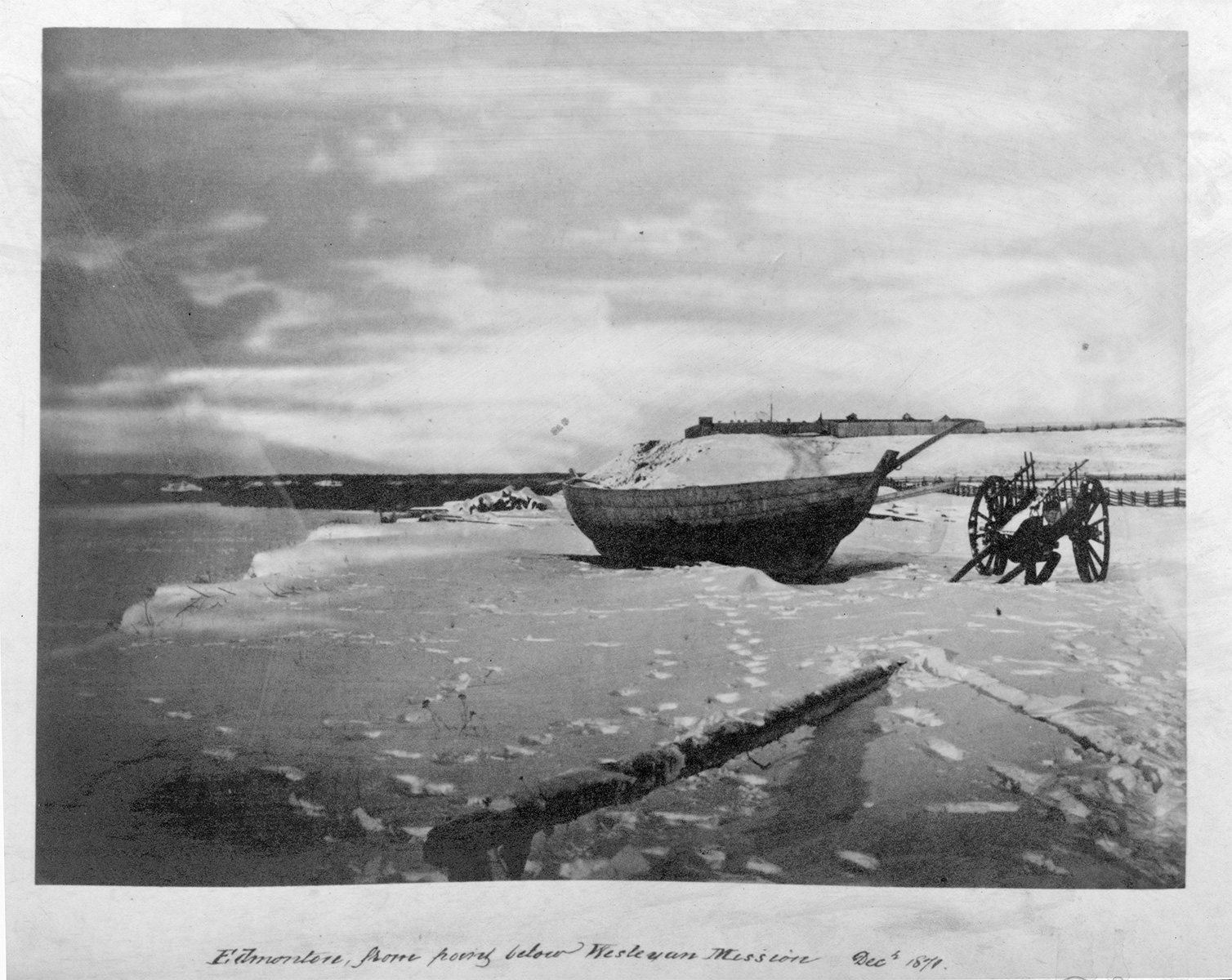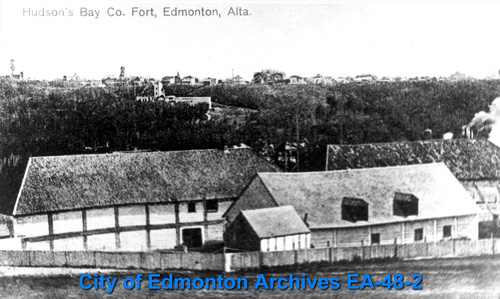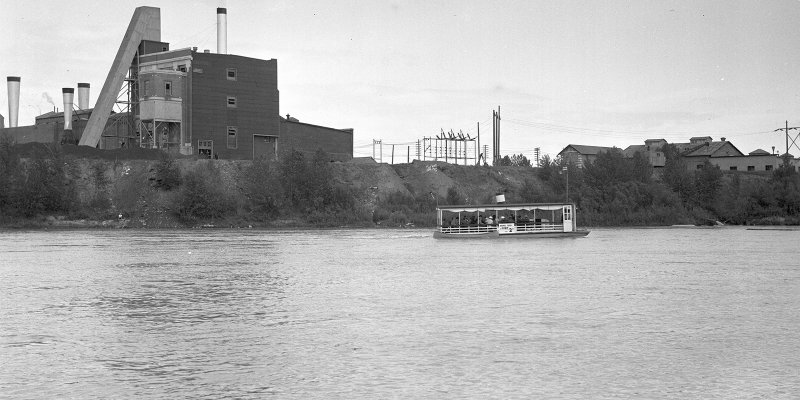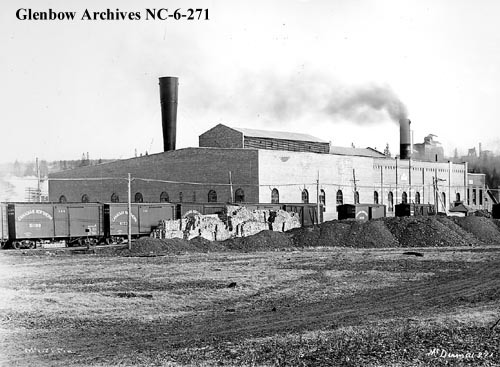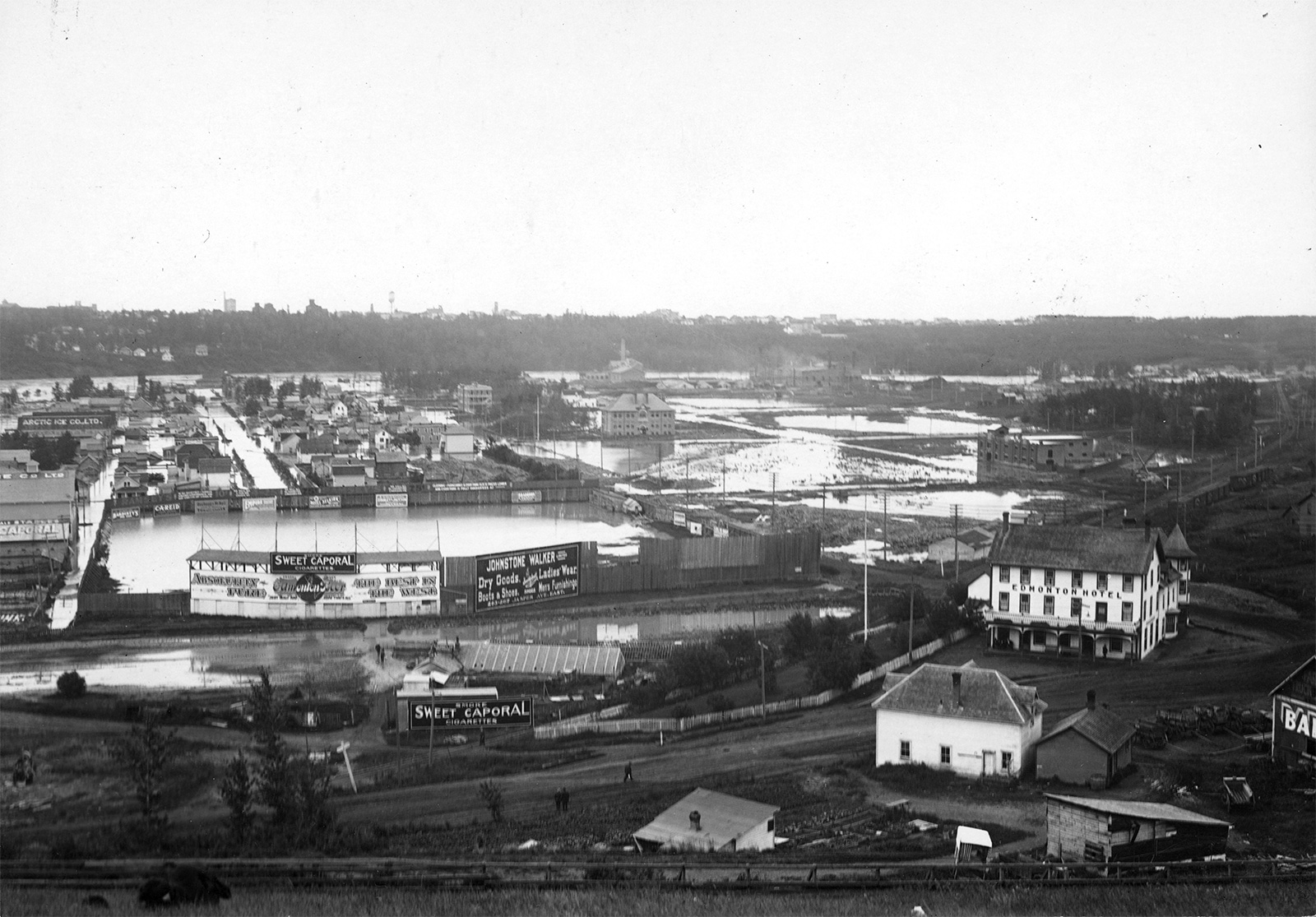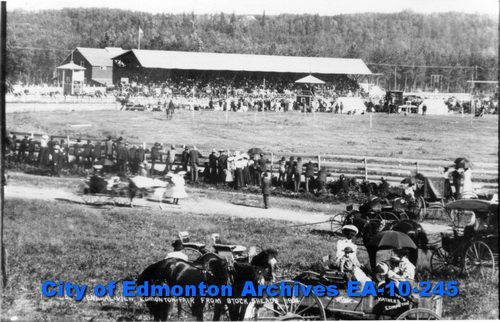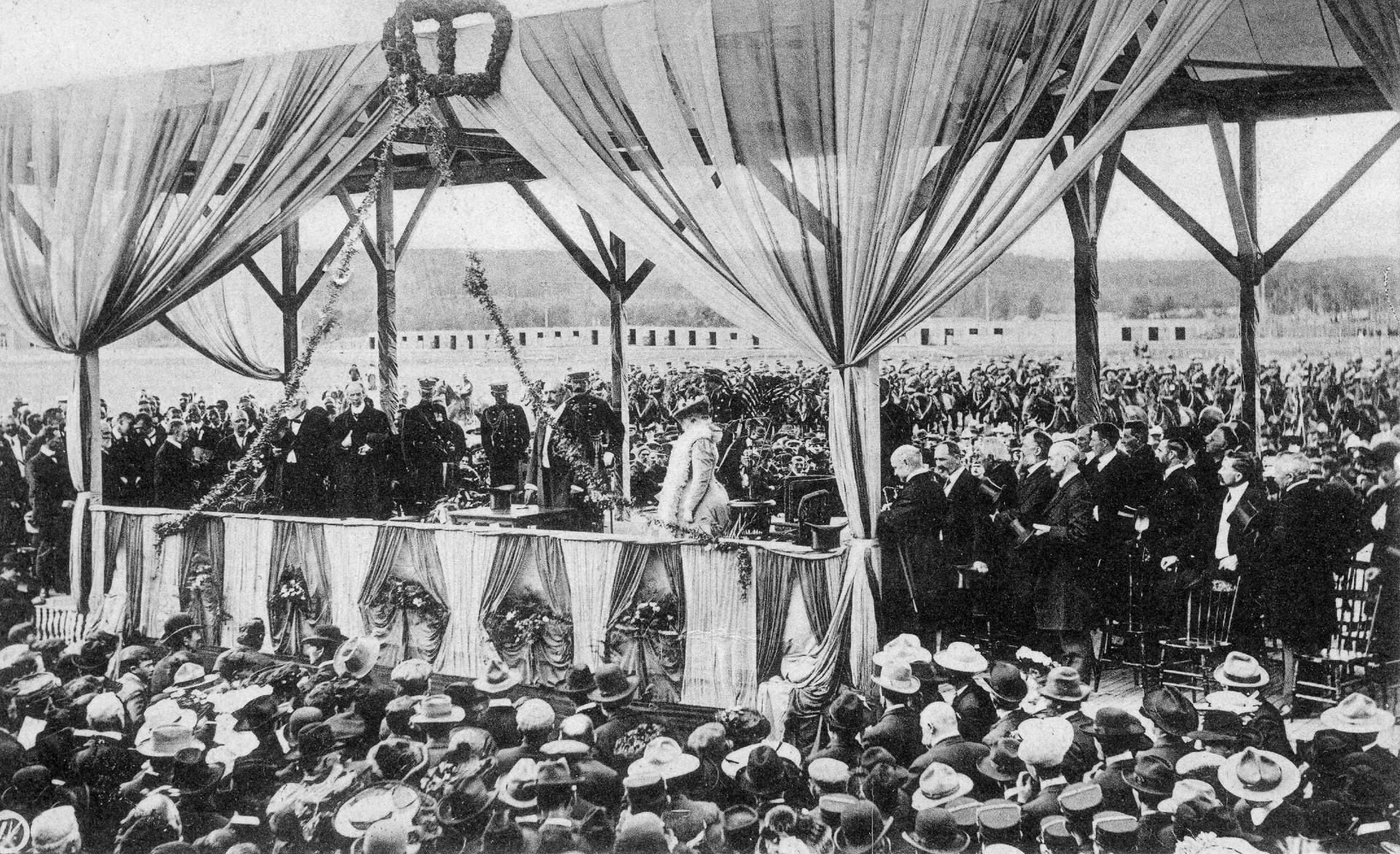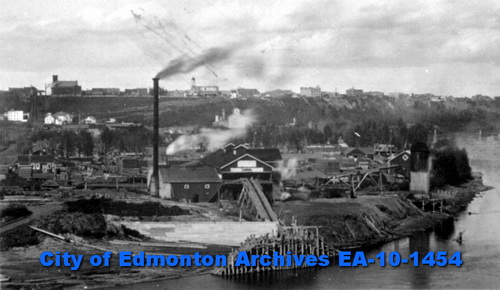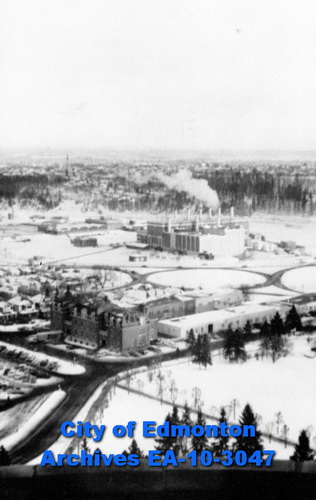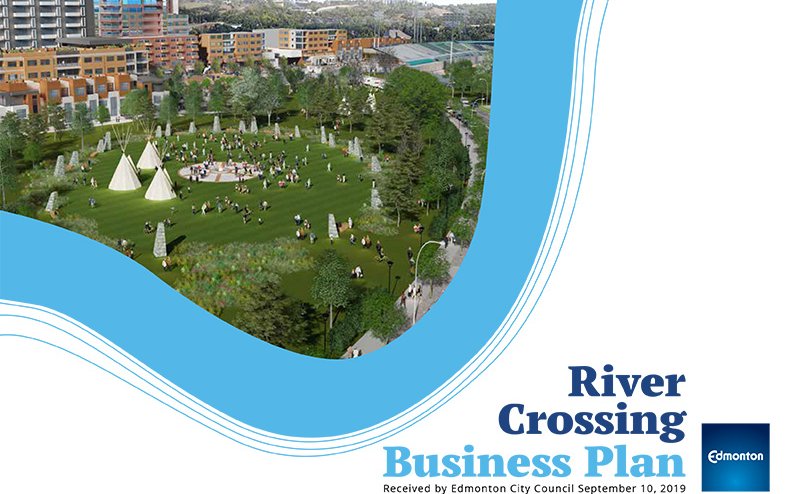River Crossing is a place that is historically and culturally significant for many people.
Edmonton is an intersection of many different Indigenous territories, and the Ross Flats where River Crossing is located are of significance to diverse Indigenous peoples, including nêhiyawak (Cree), Métis, Dene, Anishnaabe (Saulteaux), Nakota Sioux and Niitsitapi (Blackfoot).
This was a site of gathering and international Indigenous trade for thousands of years, an activity that included ceremony and diplomacy; and more recently, this area was an active site during the fur trade.
Today, the Ross Flats continue to be home to the Traditional Burial Grounds and Fort Edmonton Cemetery.
For more on Indigenous culture and history in Alberta:
This area is also an important site in the history of Edmonton and Alberta as the Ross Flats were the location of some of the earliest iterations of Fort Edmonton.
And it is where an adhesion to Treaty 6 was signed — at the site of the fifth and final Fort Edmonton (present-day Legislature grounds).
A River Crossing Story
François Lucier Jr
A titan of a man who built an unassailable reputation for himself as one of Fort Edmonton’s most dangerous and capable men. He once lived in Fort Edmonton IV - located within present day Rossdale.
The North Saskatchewan River was formed as glaciers receded after the last ice age. The river cut a deep, wide valley which began to be used by animals and soon attracted Indigenous peoples. The valley was a sustaining force, giving people water, food, shelter and medicine. Archaeologists have found evidence of camps along the valley dating back to 10,000 years ago.
Later the river was an important travel route for European fur traders pushing westward. Their first forts were built in the region in 1795. In 1802, they moved upstream to the place we now call Edmonton. River crossings in this era took on new economic importance and brought different cultures together. In the winter, crossings were on the ice. In other seasons they involved boats or swimming (or in low water, riding) horses across.
In 1882, John Walter established a cable ferry that connected the river flats we now call Walterdale and Rossdale. Walter’s ferry tied the two sides of the river closer together as Edmonton grew from outpost to city. The Walterdale Bridge, built in 2017 to replace an earlier structure, is the latest river crossing in this historic location.
In 2024, the North Saskatchewan River was designated under the Canadian Heritage River System by the Governments of Canada and Alberta.
Rossdale Power Plant
The Rossdale Power Plant is unique in Edmonton and one of the most important pieces of industrial heritage in Alberta.
Glenbow Museums Archives, NC-6-271.
Low Pressure Plant
The Low Pressure Plant was built in phases between the 1930s and 1950s to meet the growing demands of an expanding city. Maxwell Dewar, who later became Edmonton’s City Architect, designed portions of the building and ensured its architectural coherence.
The Low Pressure Plant includes:
- A Switch House which is 2 storeys high and interconnected with the Turbine Hall
- A Turbine Hall about 11 meters in height with a sunken, cast-in-place concrete structure that supported the turbines which generated electricity
- A Boiler Hall, the largest of the elements in the Low-Pressure Plant, featuring internal industrial steel framing that supported the boilers which powered the turbines
The boilers (removed along with the turbines during decommissioning) were originally coal-fired. Coal was delivered to the plant by a rail spur connecting to the Edmonton Yukon and Pacific Railway.
Pumphouses
Pumphouse No. 1, immediately south of the Low Pressure Plant, was built in 1937 and still houses its original machinery. The pumphouse’s engineering was the first design project John Poole, future Edmonton businessperson and philanthropist, did after graduating from university.
Pumphouse No. 2, which sits along the river between the Low Pressure Plant and Walterdale Bridge, was built in 1955. It features a small control room above a larger operating floor.
2022
Completion of a land transfer from EPCOR to the City of Edmonton.
2011-2012
The plant is decommissioned. This included demolition of a high pressure plant constructed in the 1960s.
2008
The plant stopped producing electricity.
2001
The Government of Alberta designated the Low Pressure Plant and Pumphouse No. 1 as Provincial Historic Resources. Those same buildings, as well as Pumphouse No. 2, are also on the City’s Inventory of Historic Resources.
1955
The plant was converted to natural gas. Pump House No. 2 was built.
1930s-1950s
The Low Pressure Plant was built in phases.
1937
Pump House No. 1 was built.
1902
Power was first generated on the site, when the city’s original, more flood-prone plant just upstream of the Low Level Bridge was abandoned.
Did You Know?
- The Low Pressure Plant lies just west of where Fort Edmonton is believed to have been located from about 1801–1810.
- The Low Pressure Plant was partially built by men “on relief” during the Great Depression.
- Much of the coal burned at the Rossdale plant was mined from the North Saskatchewan River valley.
- The Rossdale plant was the only electrical facility in Edmonton until 1970, when it generated one quarter of Alberta’s power.
- The plant’s power capacity in the late 1930s was 25 megawatts. In 1989, it was 390 megawatts.
- In 1949 the plant had 5 smokestacks. By 1954 it had 7.
A River Crossing Story
Donald Ross of Rossdale
Edmonton has its share of characters, and many even have neighbourhoods named after them. The assumption might be that these historic figures were austere politicians or wealthy and powerful tycoons of industry. In the case of Donald Ross, that assumption would be false.
Rossdale and Walterdale became some of Edmonton’s first neighbourhoods and had an eclectic mix of homes, schools, churches, industries, utilities and sports facilities.
After a major flood in 1915, the neighbourhoods' fortunes waned. Investment diminished.

Provincial Archives of Alberta, A-5532. Donald Ross School during the 1915 Flood. The Ross Flats Apartments and the Rossdale Power Plant are in the background.
After World War II, municipal policy was to acquire land on the river flats for open space, recreation facilities and freeways. Homes and businesses were demolished as the City purchased them.
The last house in Walterdale, the smaller of the 2 neighbourhoods, was demolished in the winter of 1966/67 to make way for the Kinsmen Fieldhouse, the first phase of the Kinsmen Sports Centre.
In the 1970s, new residents moved into Rossdale and other surviving valley communities, drawn by proximity to downtown and natural beauty.
They opposed policies that would extinguish their neighbourhoods. In 1975, Riverdale won the right to be preserved and in 1983, after Laurence Decore was elected mayor, Rossdale, Cloverdale, and Lavigne were protected.
New interest in West Rossdale began in the late 1990s when EPCOR proposed to expand the Rossdale Power Plant.
- Nearby residents opposed the project.
- Heritage advocates sought to preserve the historic Low Pressure Plant that would have been demolished in the expansion.
- Indigenous activists protested the disruption of a long-neglected fur-trading era cemetery and an important cultural site for Indigenous communities and settlers.
City Council approved a plan for Rossdale’s redevelopment in 1986. The plan called for new houses in South Rossdale, and these were built beginning in the late 1980s. The only direction the plan provided about West Rossdale, however, was that a special study should be done in the future. The planners hadn’t been able to win support for the higher-density, mixed-use development that they had proposed during the planning process.
In 2007 the City started the special study for West Rossdale called for in the Rossdale Area Redevelopment Plan. With significant involvement from residents and other stakeholders, the West Rossdale Urban Design Plan was completed in 2011. It called for significant roadway changes and investment in open space in support of a higher-density urban village and mixed-use development.
However, questions arose about its implementation. A private development proposal challenged the plan. This combined with plans for a new Walterdale Bridge, sale of City land in the area to the Government of Alberta, and interest in the now-decommissioned power plant led the City to recognize that a more comprehensive planning initiative was necessary.
River Crossing Redevelopment
The historic context of this land was a key component of the vision for River Crossing.
Building off the River Crossing Heritage Interpretive Plan, which guides sharing stories of the area’s complex and layered past, the River Crossing Business Plan defines a path forward that respects the historical significance and creates opportunities to reflect the area’s history into the future.
The vision for Rossdale Power Plant is for adaptive reuse, to reimagine it as a public facility within a signature district in the heart of the city.



